


A Timeless Tapestry Of Tradition And Artistry
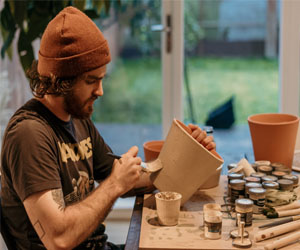
Pottery culture is a rich and diverse tapestry woven throughout human history, reflecting the customs, aesthetics, and artistic sensibilities of countless civilizations. This enduring art form has not only served practical purposes but has also become an integral part of the cultural heritage of societies around the world.
Cultural Significance: Pottery has held a profound cultural significance in the history of human civilization. In many ancient cultures, pottery was not just a craft; it was an art form deeply intertwined with rituals, spirituality, and daily life. From sacred vessels used in religious ceremonies to utilitarian items for food storage and preparation, pottery has played multifaceted roles in cultural practices.
Global Diversity: What makes pottery culture so fascinating is its global diversity. Each culture has developed its own unique styles, techniques, and traditions in pottery. From the intricate porcelain of China and the terracotta of the ancient Greeks to the vibrant Talavera ceramics of Mexico and the earthy, rustic pottery of Native American tribes, the world of pottery is a testament to the ingenuity and creativity of humanity.
Cultural Identity: Pottery often reflects the identity and values of a culture. For example, Native American pottery features distinct geometric designs and motifs that are deeply rooted in their cultural heritage. Japanese ceramics embody the principle of wabi-sabi, celebrating imperfection and the beauty of transience. The intricate patterns of Moorish pottery found in Spain are a testament to their historical Islamic influences.
Traditional Techniques: Pottery culture involves a wide range of traditional techniques that have been passed down through generations. Techniques like coiling, handbuilding, and wheel-throwing are often specific to certain regions and time periods. The preservation of these techniques helps ensure that the art of pottery remains connected to its cultural roots.
Artistic Expression: In addition to its utilitarian and ceremonial functions, pottery has long been a form of artistic expression. It's a medium that allows artists to convey their creativity and tell stories through intricate designs, shapes, and glazes. Ceramic artists often draw inspiration from their cultural backgrounds, adding new layers of meaning to their work.
Ceramic History And Evolution: The evolution of pottery culture has been closely tied to technological advancements and societal changes. The development of the potter's wheel, for example, revolutionized pottery production, enabling greater precision and consistency. Similarly, the creation of kilns capable of high-temperature firings allowed for the production of durable stoneware and porcelain.
Contemporary Resurgence: In recent years, there has been a resurgence of interest in pottery culture. Many contemporary artists draw inspiration from traditional pottery and ceramics while infusing their work with a modern twist. Studio pottery, where individual artists create unique pieces by hand, has gained popularity, allowing for a more personalized and artistic approach to pottery.
Pottery culture is a testament to the enduring appeal of this ancient art form. It transcends time and borders, offering a window into the hearts and minds of diverse cultures throughout history. Whether celebrated for its aesthetic beauty, cultural symbolism, or functional utility, pottery culture remains an integral part of the human experience, connecting us to our heritage and offering a canvas for creativity and self-expression. The continued exploration and preservation of pottery culture ensure that this timeless tradition will remain a source of inspiration and cultural significance for generations to come.


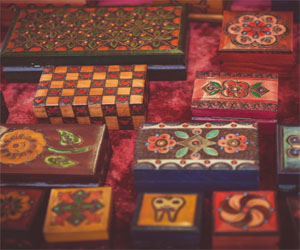
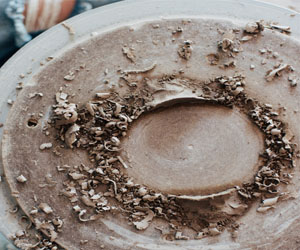
Relaxation Through Candles
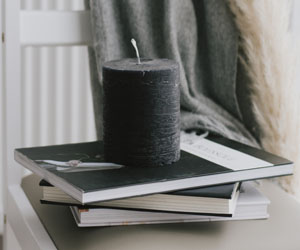 Aromatherapy And Relaxation
Aromatherapy And Relaxation
In addition to their enchanting light, candles can be enhanced with soothing fragrances that promote relaxation. Aromatherapy candles are infused with essential oils that can evoke a variety of emotions and sensations. For instance, lavender is known for its calming and stress-reducing properties, while citrus scents like lemon and orange can boost energy and elevate mood.
 Floral Designs: Flowers are a prevalent theme in embroidery, symbolizing beauty, growth, and life. From delicate daisies to elaborate roses, floral designs are celebrated for their elegance and versatility.
Floral Designs: Flowers are a prevalent theme in embroidery, symbolizing beauty, growth, and life. From delicate daisies to elaborate roses, floral designs are celebrated for their elegance and versatility.
Geometric Patterns: Geometric shapes and repetitive patterns are a staple in many traditional embroidery designs. These symmetrical arrangements create a sense of order and balance.
Animal Motifs: Animals, both domestic and wild, are often featured in embroidery designs. They can represent local fauna, mythological creatures, or personal totems, adding an element of storytelling to the art.
Religious And Symbolic Designs: Embroidery often incorporates religious symbols, such as crosses or mandalas, or other motifs that hold cultural or spiritual significance.
Contemporary Innovations: In the modern era, embroidery designs have evolved to embrace contemporary aesthetics and innovations. Artists and designers experiment with unconventional materials, techniques, and themes, pushing the boundaries of traditional embroidery. This includes abstract designs, pop culture references, and even political statements, showcasing the adaptability of the craft.
A Journey Of Craftsmanship And Creativity
 3. Wood Selection: Choosing the right wood is a fundamental step. Different woods have varying characteristics, such as hardness, grain pattern, and color. As a beginner, it's wise to begin with softwoods like pine or cedar due to their ease of workability. Once you gain experience, you can move on to hardwoods like oak, maple, and cherry.
3. Wood Selection: Choosing the right wood is a fundamental step. Different woods have varying characteristics, such as hardness, grain pattern, and color. As a beginner, it's wise to begin with softwoods like pine or cedar due to their ease of workability. Once you gain experience, you can move on to hardwoods like oak, maple, and cherry.
4. Measuring And Marking: Accurate measurements and precise markings are the backbone of woodworking. Learn to use measuring tools, such as tape measures, squares, and calipers. Understand the significance of measuring twice and cutting once, as even minor measurement errors can affect the outcome of your project.
5. Wood Joinery: Wood joinery refers to the methods used to connect pieces of wood together. Basic joint types like butt joints, lap joints, and dowel joints are a good place to start. As you advance, explore more complex joints such as mortise and tenon, dovetail, and finger joints. Proper joinery is essential for strong, stable, and aesthetically pleasing woodworking projects.
6. Finishing Techniques: The finishing touches can make or break a woodworking project. Learn about the various finishing techniques, including sanding, staining, and applying protective coatings like varnish or polyurethane. Proper finishing not only enhances the appearance of your work but also protects it from the elements and wear and tear.
7. Woodworking Plans: For beginners, it's often helpful to work from pre-designed woodworking plans. These plans provide step-by-step instructions, detailed drawings, and a list of necessary materials and tools. Working with plans can help you understand the construction process and build your confidence in the craft.
8. Practice And Patience: Woodworking, like any skill, requires practice and patience. Don't be discouraged by initial mistakes; they are an integral part of the learning process. Every project you undertake, no matter how simple, will contribute to your growth as a woodworker.
Exploring Herb Uses In Cooking
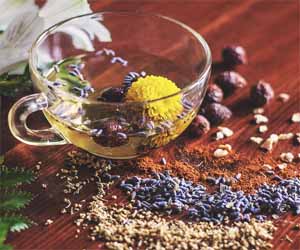 Rosemary And Lamb: Rosemary's robust flavor pairs harmoniously with the rich and tender nature of lamb.
Rosemary And Lamb: Rosemary's robust flavor pairs harmoniously with the rich and tender nature of lamb.
Mint And Desserts: Mint's refreshing taste is perfect for desserts like chocolate mousse or fruit salads.
Parsley And Seafood: The bright, grassy flavor of parsley beautifully complements seafood dishes, such as shrimp scampi.
Versatile Uses
Herbs are incredibly versatile and can be used in various culinary applications:
Marinades: Herbs can be included in marinades to infuse meat, poultry, or vegetables with flavor. For example, a marinade of garlic, rosemary, and lemon juice can transform chicken into a delectable dish.
Sauces And Dressings: Herbs can be used to create vibrant sauces, such as pesto or chimichurri, or to elevate salad dressings, like a balsamic vinaigrette with fresh basil.
Flavoring Meats: Herbs can be used as a rub or stuffing for meats, adding depth and aroma. Sage and thyme with turkey, for instance, create a classic Thanksgiving flavor.
Infusions And Garnishes: Herbs can be used to infuse oils, butters, or even cocktails. A sprig of fresh mint in a mojito or a basil leaf in a gin and tonic can enhance the beverage's flavor and aroma.
Health Benefits
In addition to their flavor-enhancing qualities, herbs often have health benefits. For example, ginger is known for its digestive properties, while turmeric has anti-inflammatory qualities. Incorporating these herbs into your cooking not only makes your dishes tastier but can also contribute to your well-being.
A Journey To Wellness And Vitality
 Plant-Based Healing: Plants are a rich source of healing properties. Aloe vera, for instance, has been used for centuries to treat burns and skin irritations. Turmeric is renowned for its anti-inflammatory and antioxidant properties. Ginkgo biloba is used to enhance memory and cognitive function.
Plant-Based Healing: Plants are a rich source of healing properties. Aloe vera, for instance, has been used for centuries to treat burns and skin irritations. Turmeric is renowned for its anti-inflammatory and antioxidant properties. Ginkgo biloba is used to enhance memory and cognitive function.
Herbal Elixirs: Herbal remedies often take the form of teas, tinctures, or infusions. Herbs like chamomile and lavender are known for their calming effects, while Echinacea is a popular choice for boosting the immune system.
Essential Oils: Essential oils are highly concentrated extracts from plants and are used in aromatherapy and topical applications. Lavender oil promotes relaxation and sleep, while tea tree oil has potent antimicrobial properties.
Healing Crystals And Minerals: Crystals like amethyst, rose quartz, and citrine are believed to possess healing energies. They are often used in energy work and meditation to restore balance and harmony.
Holistic Approach: The healing properties of natural elements are not limited to physical ailments. They are also used to address mental and emotional well-being. Aromatherapy, for instance, can alleviate stress and anxiety.
Detoxification: Healing properties often include detoxification. Ingredients like dandelion root and milk thistle support the liver in removing toxins from the body.
Mind-Body Connection: Many healing practices recognize the deep connection between the mind and the body. Meditation, yoga, and mindfulness techniques harness the mind's power to promote healing.
The Power Of Touch: Therapeutic touch, massage, and acupuncture are healing modalities that involve physical interaction to alleviate pain, tension, and promote relaxation.
Craftsmanship And Artistry In Clay
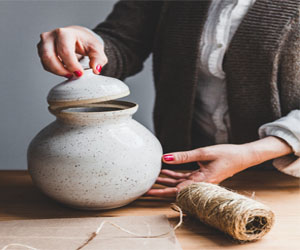 The Creative Process: The creation of handmade ceramics begins with selecting the right type of clay, which can range from earthenware to stoneware to porcelain, each offering unique characteristics and possibilities. Once the clay is chosen, it's hand-worked into the desired shape, whether a functional piece like a bowl or a purely decorative sculpture.
The Creative Process: The creation of handmade ceramics begins with selecting the right type of clay, which can range from earthenware to stoneware to porcelain, each offering unique characteristics and possibilities. Once the clay is chosen, it's hand-worked into the desired shape, whether a functional piece like a bowl or a purely decorative sculpture.
Artists often experiment with textures, patterns, and surface treatments to give their pieces a distinct character. They may carve, incise, or use various glazing and decorating techniques to achieve their artistic goals. Each piece reflects the artist's individual style and creative expression.
The Human Touch: What sets handmade ceramics apart is the human touch evident in every detail. These pieces bear the imperfections and idiosyncrasies that result from the artist's hands, making each item truly unique. The texture of the clay, the nuance of the glaze, and the individual characteristics of the artist's work contribute to the rich diversity of handmade ceramics.
Functional And Decorative Art: Handmade ceramics serve a dual purpose in both the realms of functional and decorative art. Many artists create pottery that is not only beautiful but also functional, such as mugs, plates, and vases. These pieces add a personal and artistic touch to everyday life, enhancing the aesthetic experience of daily rituals like enjoying a cup of coffee or arranging flowers.
On the other hand, decorative ceramics explore the boundaries of the medium and often serve as standalone art pieces. Sculptural and abstract in nature, they challenge conventional notions of pottery and ceramics, pushing the limits of what can be achieved with clay.
The Role Of The Artist: Handmade ceramics emphasize the role of the artist as a creator, with each piece reflecting their unique perspective, skill, and creativity. These artists invest time and energy into honing their craft and often form a deep connection with the materials and the process itself.
A Time-Honored Craft
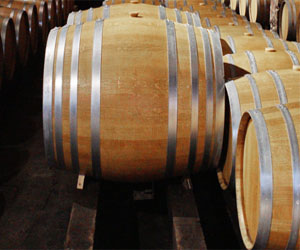 Once the grapes are collected, they are processed through various methods, including crushing, destemming, and pressing. The choice of these methods, like the choice of grape variety, varies from region to region, reflecting the traditions and techniques that have been perfected over time.
Once the grapes are collected, they are processed through various methods, including crushing, destemming, and pressing. The choice of these methods, like the choice of grape variety, varies from region to region, reflecting the traditions and techniques that have been perfected over time.
Fermentation And Aging: The fermentation stage is where the magic happens. Yeasts convert the grape sugars into alcohol, and this is a stage where winemaking traditions show their depth. Some wineries still rely on wild, naturally occurring yeasts for fermentation, while others use cultivated yeasts to ensure consistency. The decision can greatly influence the wine's character.
Aging is another crucial aspect of winemaking traditions. Many winemakers use oak barrels, which can impart flavors and aromas to the wine, adding complexity and depth. The length and type of aging are often guided by tradition. For example, in Bordeaux, it's common to age red wines in oak for extended periods, while in the New World, there's often a preference for a more fruit-forward style with shorter aging.